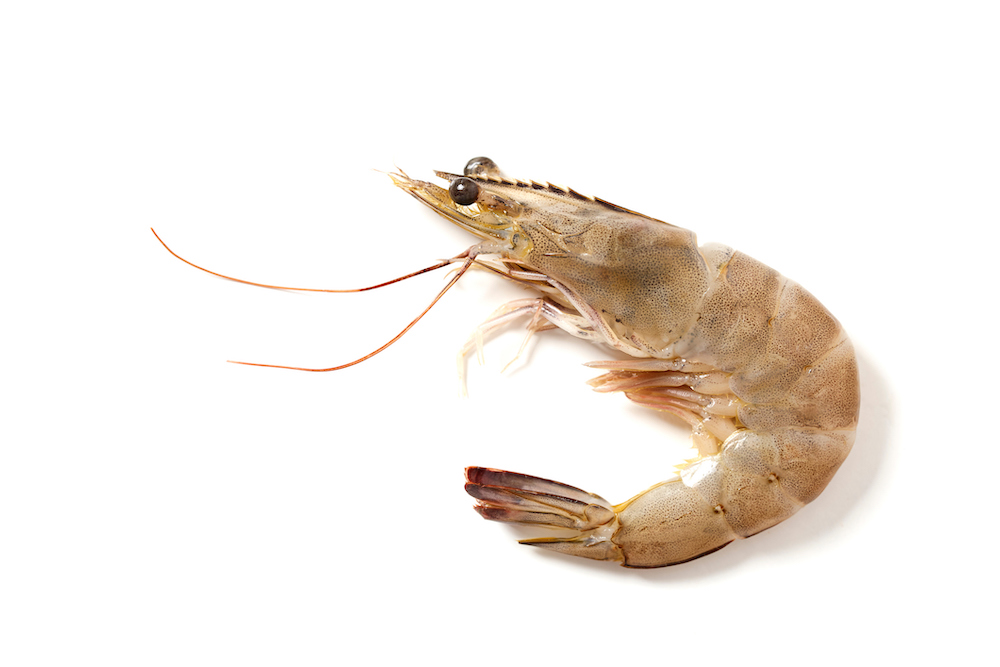- New technology permits shrimp farms in South Dakota and Minnesota to supply restaurants and stores throughout the Midwest.
- Aquaculture, especially shrimp farming, has fouled waters and wrecked habitats around the world, despite efforts by a handful of companies to follow sustainability practices.
- The industry, critical to countries in Southeast Asia, India and Latin America, contributes about $45 billion annually to the global economy.
More than a thousand miles from the nearest ocean, Madison, South Dakota, probably doesn’t bring to mind tasty little crustaceans harvested from warm seas.
That is changing, as a shrimp-growing “harbor complex” with an environmentally friendly design is slated for construction on Lake Madison, just west of the Minnesota state line and in the heart of corn, soy and cattle country.
Trū Shrimp has developed a patented system that allows for vertical farming of the crustaceans in an environment that recreates ocean currents, and diners in Chicago may soon feast on shrimp raised on the prairie. The founders claim the shellfish are sustainably produced, in contrast with those from farms in Asia and Latin America where some have reputations for disease outbreaks, pollution and wetland destruction.
“When we started out we thought we might build a shrimp farm or two, but it became quite evident that we had the opportunity to build an entire industry here in the Midwest,” Michael Ziebell, Trū Shrimp president and CEO, said on a Boundless Impact Investing webinar.
The system includes self-contained tanks, with circulating water that removes waste in contrast with conventional farms that dump directly into seas and waterways. Regarding power, Trū Shrimp uses more electricity than those farms due to motors used for circulation. Still, much of the prawns’ diet consists of locally-grown soybeans, and the harvested shrimp isn’t shipped globally.
The company operates a pilot research facility in Balaton, Minnesota, that consists of eight stacked basins 12-feet wide and 150-feet long. Trū is raising $286 million to build its Madison facility, which will track the shrimp life cycle from hatchery to water reclamation. Vertical stacking will allow the 4.5-acre building to hold 23 acres of water.
Shrimp grown in Trū’s basins produce several times less waste than intensive and semi-intensive farms, Fernanda Avila Swinburn, an analyst at Boundless Impact Investing, said on the webinar.
These developments come as more attention is paid to the environmental degradation that has accompanied conventional shrimp farming. These farms are responsible for 55% of global output, the World Wildlife Fund said. Organic waste, chemicals and antibiotics can foul surface water, while salt from ponds can seep into groundwater. The WWF has established an Aquaculture Stewardship Council standard, that certifies sustainably produced farmed shrimp.
“These shrimp never live in their own waste, unlike shrimp ponds across the world where waste is allowed to settle,” Ziebell said. “Our waste material is constantly removed producing a very benign environment where the shrimp can thrive.”
Disease outbreaks threaten the open pens at most shrimp farms. Decapod iridescent virus 1 has re-emerged in China, threatening to decimate the country’s shrimp farms. About a quarter of shrimp farms in Guangdong province, the center of the country’s industry, have been infected by the virus, the South China Morning Post said.
Trū Shrimp, which describes itself as an affiliate of animal nutrition company Ralco, announced its first customer in September — The Fish Guys, a seafood distributor in St. Louis Park, Minnesota.
Their products won’t be found in the bargain bin at your local grocery store anytime soon. The company will compete in the “premium market, which we feel is 2% to 4% of the market today, and could rise to 15%,” Ziebell said. “We are operating at about a 5% premium to wild-caught and about a 15% premium to imported shrimp.”























